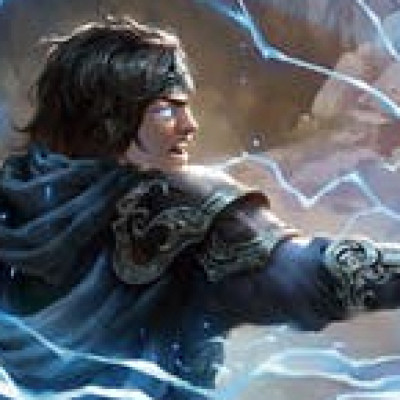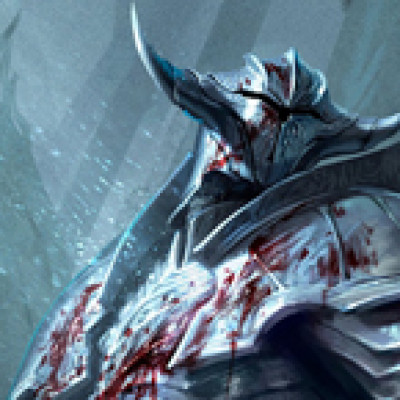The Everfest carnival has come to Flesh and Blood as it travels through the heart of Aria, surrounded by the three elements and bringing many strange wonders with it. Not least among these is the newest addition to the game’s roster of elemental heroes, and the first elemental hero attuned to only one element: Iyslander.
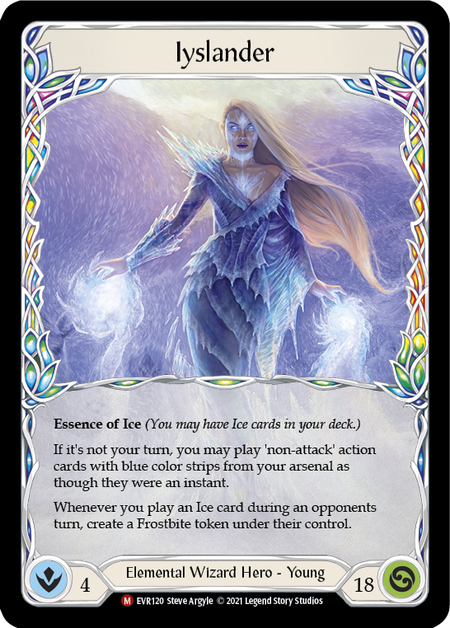
At a glance, Iyslander is a strange sight- an intimidating woman with a gaze almost as chilling as her command over the element of ice. She is a young elemental wizard hero with Essence of Ice, meaning she has access to Ice cards alongside the Wizard card pool, and a hero ability that reads:
If it’s not your turn, you may play ‘non-attack’ action cards with blue colour strips from your arsenal as though they were an instant.
Whenever you play an Ice card during an opponent’s turn, create a Frostbite token under their control.
This immediately conjures an idea of how an Iyslander deck may play- and also some concerns that could come up. The first part of this hero ability is certainly the more curious, with specific interactions with both blue cards and the arsenal. Iyslander will rarely, or ever, be able to play more than one damaging instant in a turn, as it requires her arsenal to play. Secondly, the damage she will put out with arcane damage is, by definition of being a blue, inefficient. The crux of this is: while Iyslander is a wizard, it’s painfully obvious that she doesn’t play anything like her wizard counterpart Kano, who is her opposite in both theme and playstyle.
The upside of this limitation, however, is that Iyslander does not have the same steep tax on playing instants as Kano, who needs to spend 3 resources on his hero ability before even approaching the cost of the Action-made-Instant. This means you’re almost entirely free to block and be patient until the end of your opponent’s turn, holding a blue in hand to play a blue damaging spell from arsenal that will almost never be blocked. This kind of turn cycle is, on paper, key to how Iyslander plays, and it immediately lends itself to some core card choices for the deck.
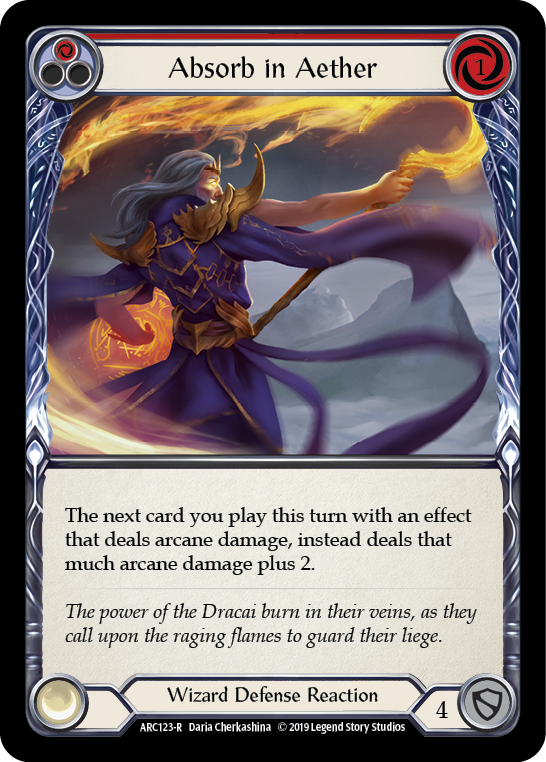
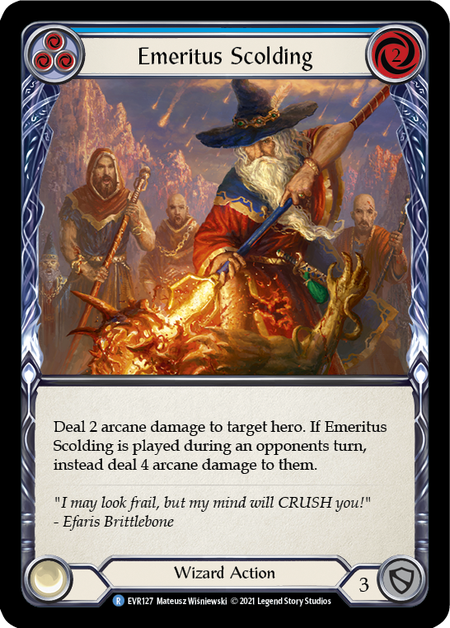
Emeritus Scolding feels like it was made for this deck. A card specifically designed to be more efficient on an opponent’s turn? A perfect inclusion. Absorb in Aether is another huge contender in the deck, as you can pitch for 3, play absorb to block for 4 and use the remaining 2 resources to play your card from arsenal.
But this is only half of the story. The real strength in Iyslander comes from playing Ice cards at instant speed, all while generating Frostbite. Though the Ice card pool available her is limited, they are unrivaled in their disruption. You thought Channel Lake Frigid was bad? Try running into it when you’ve already half-committed to your turn AND you have to push through a Frostbite!
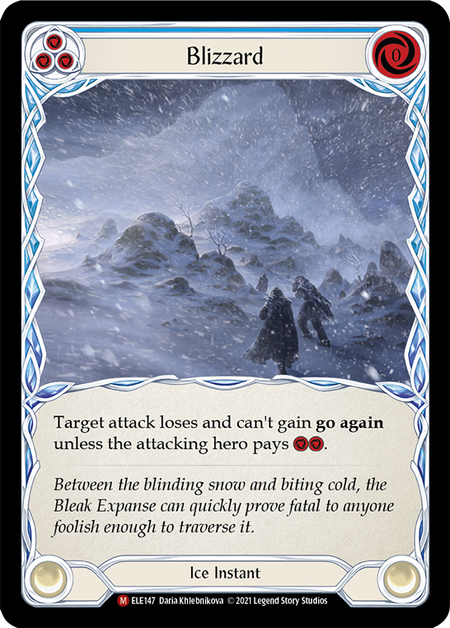
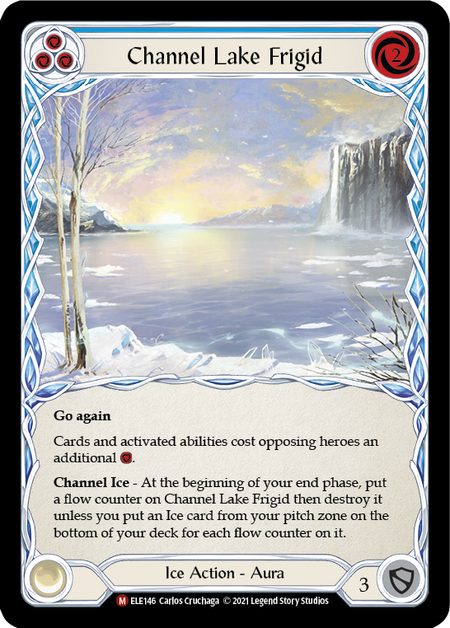
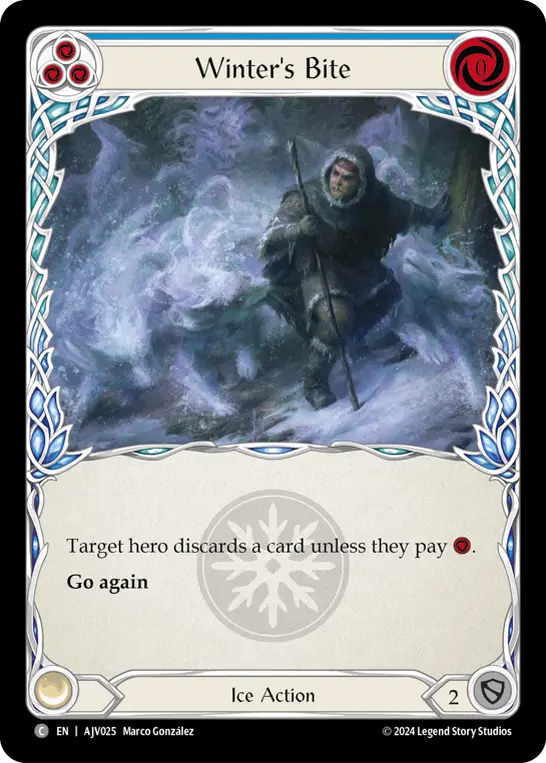
The obvious choices for these deck spaces go to Channel Lake Frigid, Blizzard (depending on how many aggressive, wide decks are in your meta), and Winter’s Bite, with honourable mentions to Polar Blast for the redraw effect.
Alongside the Ice suite, the new Wizard common Pry- which reveals your opponent’s entire hand and replaces one card- is a phenomenally potent effect that fits in perfectly with the rest of Iyslander’s disruption engine.
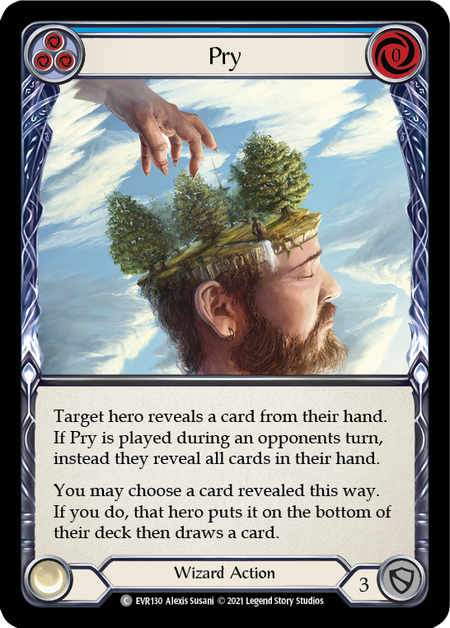


As potent as this disruption engine is, the limited card pool means you only have a finite number of these cards in your deck, so you need more ways to survive and get to your damage than just slowing down your opponent. This is where a classic defensive package comes in, focused on life gain and survivability. Sigil of Solace has always had a place in blitz metas, and is still a welcome inclusion in this deck. Sink Below is a staple, good-value defense reaction. And the last piece is Tome of Fyendal, most often paid for by a Tunic counter to gain 2 or 3 life and replace your arsenal with a fresh blue to play.
Now the deck comes to something of a crossroads: you can only arsenal either a damage card or a disruption card, not both. When you don’t have a damage card, how do you progress the game? When you don’t have a disruption card, how do you protect yourself on this turn?
This is where the optional attack package comes in. Many Iyslander brewers have been reaching the conclusion that a curated attack suite can patch the gaps in Iyslander’s play. While pure arcane Iyslander decks are also being developed, I personally enjoy taking a more proactive stance in the game. My key attack actions include Enlightened Strike, Frost Fang, and Command and Conquer. To be even more of a bother to your opponent, consider running Goliath Gauntlet for key Command and Conquer turns.
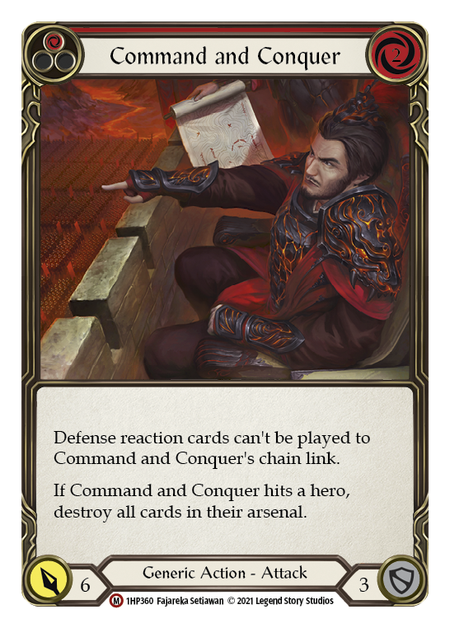

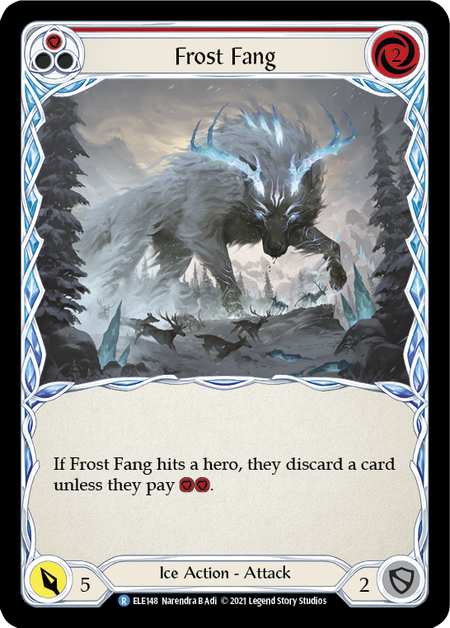
So now we’ve established Iyslander as being a deck with an intensely strong disruption engine and a decent amount of unblockable- albeit weak- damage. The next question is: how do we win the game? This can be a more complicated question than it initially appears; however, it ultimately boils down to two primary game plans.
The first involves leaning entirely into the control side of Iyslander, usually as a pure arcane deck. Including mostly 3-blocking cards, the defensive and disruption packages, and featuring a common card from Everfest that has not seen much success in wizard otherwise: Timekeeper’s Whim. With the potency of Iyslander’s disruption package, it is possible to slow down your opponent enough to start chipping at them every turn with a Whim in the late game, cycling to the bottom of your deck repeatedly.
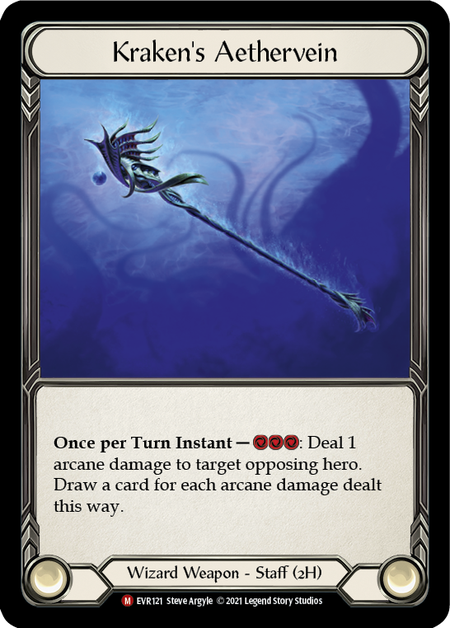
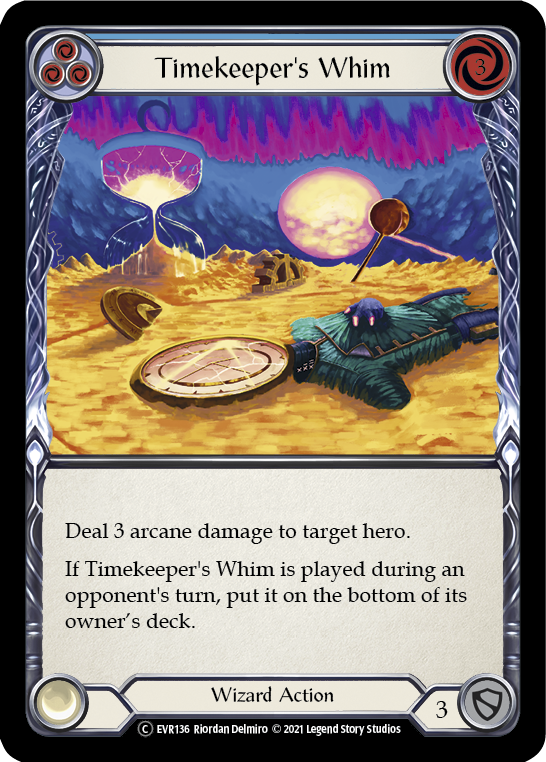
This approach makes Kraken's Aethervein shine. In activating its effect on your turn and the end of your opponent’s, you're forcing them to choose between taking the ping for one and letting you cycle your deck, or spend an entire card to prevent 1 arcane damage. It's a very powerful thousand-cuts-esque strategy.
However, I personally feel there are more exciting ways to close a game with Iyslander.
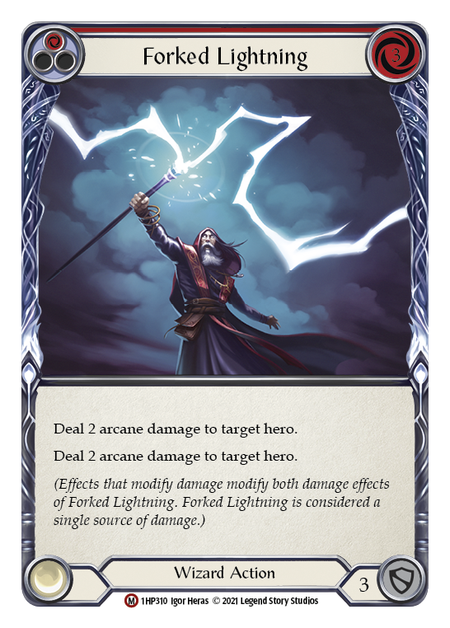
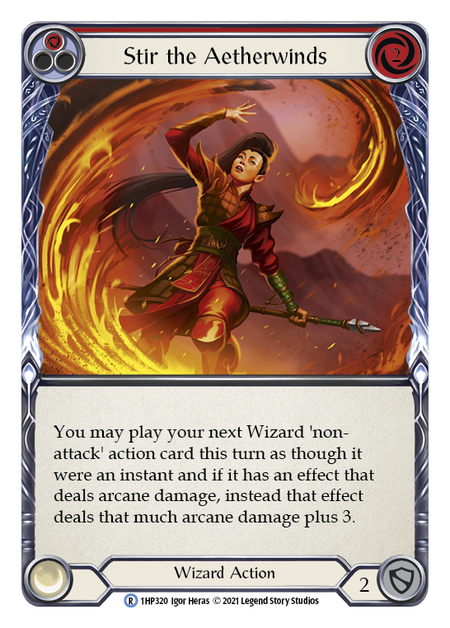
My preference is for the One-Turn-Kill (OTK). While Iyslander does not have access to Blazing Aether- a key OTK card in Kano decks- she is still a wizard; and as such, she has access to Stir the Aetherwinds and Forked Lightning. The idea with this win condition is to pitch Stir, Forked, and Absorb in Aether near each other on the bottom of your deck; then slow your opponent down with disruption and attack actions until you reach it- while playing an Energy Potion or two along the way.
The final combo is Absorb in Aether, Storm Striders to play Stir the Aetherwinds, into Forked Lightning- ideally, with an activation of Crucible of Aetherweave and/or Metacarpus Node. At full power, this combo will deal 18 arcane damage, or 22 if you line up a second copy of Absorb in Aether. By this point you usually don't need all of that damage to close the game, but an OTK needs that reach.
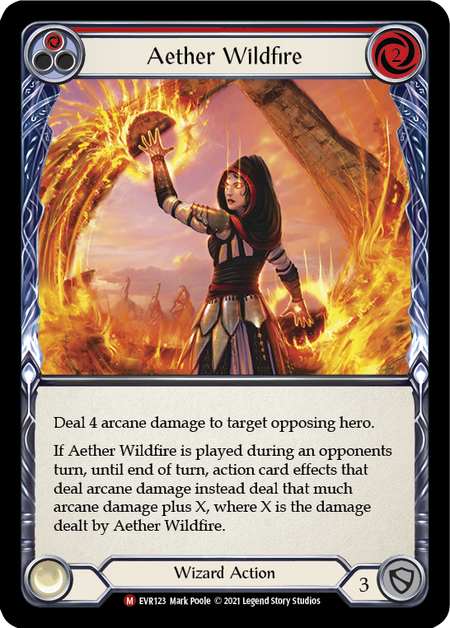
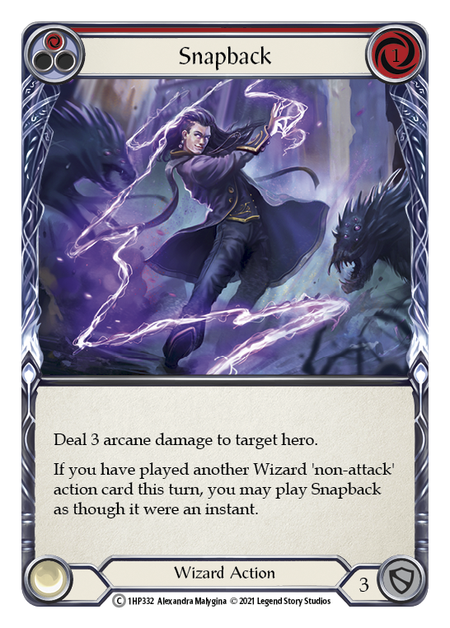
Alternatively, a different combo engine that can be played is Absorb in Aether, Stir the Aetherwinds, Aether Wildfire, and one or two Snapbacks. This is a more proactive OTK that can heavily punish aggressive decks that tap out of resources entirely without needing to set up a pitch stack. However, it is weaker against decks that can block 4 or more on the first hit, such as Oldhim.
Below are decklists for my core Iyslander list, with each combo package included. Unfortunately, for these OTK strategies, Storm Striders is a necessary card for the combo- no way around it.
A Few Cards Worth Noting
There are cards that, at first glance, seem to be no-brainers for Iyslander- or at the very least, synergistic.
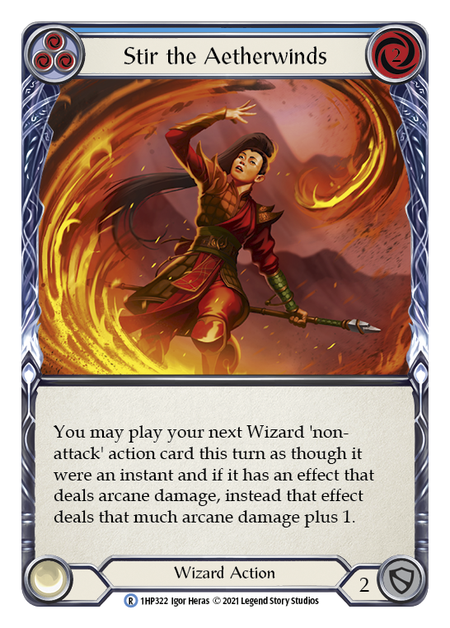
First among these is Stir the Aetherwinds blue, which on paper feels like it should be an instant-inclusion in this deck, allowing Iyslander to play an arcane damaging card from hand. In my experience (which I will never claim to be definitive), blue Stir the Aetherwinds is too expensive for too inefficient damage to justify; and although it lets you play a red from hand, I feel I would prefer to block out and wait another turn to arsenal a better blue, or just play a red from hand.
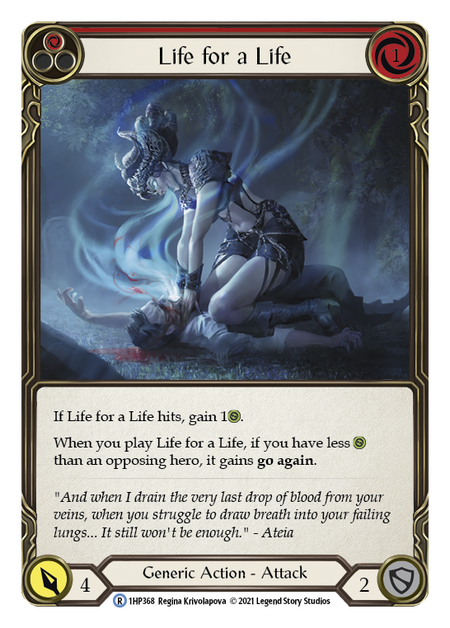
In the attack action package, Life for a Life seems an ideal fit, as pitching a blue to play it with go again organically flows into a 2-cost attack or spell for a very strong turn. The issue with this is that it requires three or more cards to pull off, and generally a deck this defensive should expect a 2-card hand at most.

Snapback red also seems like a very strong card, and it is a staple in arcane decks; but in my Forked Lightning deck it has been cut because of how little the deck will play a triggering Wizard spells from arsenal, leaving Snapback a dead red a lot of the time.
Other arcane cards like Chain Lightning and Emeritus Scolding red have shown up in other decks- but unlike Kano, Iyslander has no easy way to activate these cards, so they have been excluded.
Expert Disruption
Relative to how the rest of Flesh and Blood operates, Iyslander is something of an unintuitive wildcard, especially the fatigue variants. Being able to play huge disruption halfway through an opponent’s turn is an incredible boon- but only with the support that it needs and the timing to pull it off.
Similarly, a powerful OTK is only as strong as your ability to get to it, so I’ll share some tips to be able to optimise your survivability and pull off your combo. This advice relates to the OTK decklists above, and is less applicable to pure arcane and fatigue variants.
The most impactful card in Iyslander’s kit is Channel Lake Frigid- but that’s not to say the rest of the disruption package is weak. To explain how to optimise your disruption, I would like to introduce a concept I like to call Pitch Fragility, which is a measure of how efficiently a deck uses its resources each turn. We know opponent’s decks can have different pitch distributions, with more or less blues depending on their deck and their needs; however, their turn-by-turn pitching can also give an insight into how impactful your disruption is.
A great example of this is Ira. While Ira generally has a medium- to high-level of blues in the deck, their turns are almost always going to be pitching a blue, attacking with both weapons and finishing with a 1-cost attack. They are efficiently using 1 blue’s worth of resources every turn- no more and no less. A single Frostbite, or a single forced payment from Winter’s Bite, can be all it takes to shut this turn pattern down completely, especially if you’ve prompted the Ira player to double block an attack action the turn before. As such, I would call Ira a deck that is 'pitch fragile'.
Against all decks- but particularly 'pitch fragile' decks- you want to line up Channel Lake Frigid with their 4-card hands with full arsenals. This guarantees it has the greatest impact on their turn. Usually, you would want to play it in response to an opening non-attack action, such as a Sharpen Steel or Plunder Run, in order to push as much additional tax on your opponent as possible.
The pitch fragility really comes into play with cards such as Pry, Winter’s Bite and Blizzard. With decks that rely on a single blue to play a turn, Pry can immediately lock them out of their necessary resources, or can send their strongest card to the bottom and force them to try again. Winter’s Bite, along with the Frostbite it generates, can break the backs of 'pitch fragile' decks who are forced to commit an entire extra card on top of their turn to pay for it. Similarly, Blizzard and the Frostbite it generates (even when played from hand, as it is inherently an Instant) can force a fragile deck to commit far more resources than it can afford, functionally losing them an entire turn.
Timing is key with these cards, however- particularly with those that generate a Frostbite. Always try to play them when an opponent is at zero resources so you can guarantee the extra card tax.
The Roles of Your Attacks
The attack actions in the deck are important, both at slowing down your opponent and- strange as it may seem- to help you set up your pitch stack. Enlightened Strike is self-explanatory: it’s a hyper-efficient attack that lets you secretly send a card you need for combo to the bottom of your deck in a similar manner as Sink Below.
Frost Fang serves a range of purposes. Firstly, it is an attack that will always soak a minimum of one card from your opponent- and if that's all it does, they are taking 5 damage, making your big combo more consistently lethal. If they block with 2 cards, it is often strictly beneficial for you.
It’s second purpose is to help pitch stack your deck while keeping your hand on the tempo of the game by pitching a red combo card and using a resource on Tunic to play the attack. (This is a strategy I initially learned from a club brute player from locals- commonly known as Yazi on YouTube.) It gives you an excuse to pitch reds instead of blues or yellows, keeping your endgame strong.
The third and final purpose of Frost Fang is to pitch for Crucible of Aetherweave while Channel Lake Frigid is on the field. Because Channel Lake Frigid only checks for Ice cards at the end of your turn, if you play it on your opponent’s turn you still have the opportunity to pitch on your turn to keep it around for an additional turn. While Iyslander does not always focus on keeping CLF for multiple turns, if you are able to, you can grab a very firm hold of the game.
The final attack in the deck is Command and Conquer- which usually serves to take 2 cards from your opponent’s hand, but can also be used to assist in pitch stacking in the same way as Frost Fang. Command and Conquer, however, is your prime target for Goliath Gauntlet. Ideally, you would use Goliath Gauntlet and Command and Conquer when you have a strong read on your opponent’s arsenal, trying to target key combo pieces in the mid to late-game such as Blood on her Hands from Kassai or Plunder Run in many of the aggressive Blitz decks. Try not to expend this pairing in the early game unless it is necessary, as the impact is greater later in the game in the turns leading up to your OTK.
Hitting the Combo
The last suite of tips I will leave you with concern setting up the combo itself, which comes surprisingly naturally even to people unused to pitch-stacking. All you want is one Absorb in Aether, one Stir the Aetherwinds, and one Forked Lightning. Because of how much you are blocking and how little you are pitching, if you pitch these three cards when you see them, they are very likely going to end up next to each other.
The easiest way to pitch these cards is towards Crucible of Aetherweave, but they can also be used to pitch for your second copy of Absorb in the mid-game, or in tandem with Tunic to play a 2-cost attack, or just being sent to the bottom with a Sink Below or Enlightened Strike.
Another point of consideration is to play both Energy Potions as you see them- which can be played as Instants from arsenal if needed.
The last thing to be sure of is whether you are going to draw all 3 combo pieces in the same hand. This can be done by counting the number of cards in your deck, remembering where your combo pieces are, and checking if they are in a group of 4 cards that are a multiple of 4 (your intellect) away from the top of the deck. If they are, you will draw them all together. In the frequent occurrence that they are not, try to draw cards with Tome of Fyendal or Polar Blast to align them, or make sure your arsenal is free when you draw the first piece so you can draw the other two together.
Once you have all of them in hand, wait until your opponent attacks you so you can use Absorb in Aether and you should have an easy lethal.
Parting Thoughts
Iyslander is an extremely potent control deck that can be played in a surprisingly wide range of ways, despite what her limited card pool may indicate. While I do believe she is a meta-dependent hero and doesn’t have amazing tools to deal with certain matchups, she is a force to be reckoned with and should never be discounted. Her disruption engine is the strongest in the game, bar none; and her access to the Wizard card pool makes her finishers even more potent.
Humorously enough, I have often won games simply by making my opponent forget I was playing a Wizard and leaving themselves open to a cheeky lethal in the mid-game. While the hybrid-OTK style decklists in this article are by no means the definitive way to play Iyslander, they are definitely powerful; and as a fresh take on Wizard, they're sure to surprise any local meta.
Enjoy playing a deck specifically built around being a bother to your opponent, and may your friendships survive this ordeal!
Narration by Mark Chamberlain. | Music by Wavecont. | Licensed under creative commons Attribution-ShareAlike 4.0 International. | Music promoted by Chosic.



